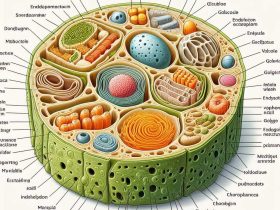INTRODUCTION:
Biology is the genre where dealing with living organisms is done. Various kinds of species including floras and faunas have emerged through ages, and in this current world there are a lot of species roaming around. Their identification is a big umbrella term. Their identification includes their classification in various groups according to their nature and behavioral activities, and putting on specific names through scientific processes. The part in biology that deals with all these has been recognized as taxonomy. The term has emerged from the combination of two ancient Greek words; taxis, meaning arrangement and nomia which indicates method.
PROCESS AND SPECIFICATIONS:

In this process of classification, the species are grouped into taxa. Then these specified groups are divided into ranks based on their taxonomy, which is known as taxonomic ranks. Aggregation can be done within the groups that have been given specified ranks with a view to form inclusive group of higher ranks. This will result in the creation of taxonomic hierarchy. In the modern taxonomic classifications, the ranks that are used widely are:
Domain
Kingdom
Phylum
Class
Order
Family
Genus
Species
The person who has been regarded as the founder of the modern system of taxonomy is the Swedish Botanist Carl Linnaeus. He is well known for the invention of a ranking system which has been named after him as Linnaean taxonomy. He has also given the idea of naming the biological organisms which is known as biological nomenclature.
Here we will discuss some fun and attractive activities to study the taxonomy system and to apply them in the identification and nomenclature of various species through simplified processes.
ACTIVITIES:

Graphic organizers have been proven as one of the best methods to learn and attain mastery of taxonomy. Some of the activities have been enlisted here:
Creating Taxonomy Pyramid:
Covering the necessary vocabulary regarding the taxonomic processes, very basic activities have been scheduled. An upside down pyramid organizer has been made. This will help in the introduction of the entire scientific classification systems including the domains and the kingdoms. This will provide ample idea of the process of the classification system from the largest number of organisms to the smallest number. It will also highlight the broadest common characteristics as well as the most specific ones.
Classification Mobile:
This is one of the funniest activities which is also a great way to revise the taxonomy system and thereby understanding the very basic facts. Nothing but some flashcards and paperclips are needed to create this classification mobile. This way has been proven more stimulating than simply copying down the information in data boxes. In this activity the students have to choose a specific organism and then they have to investigate about the taxonomy and scientific name of the organism.
Creating wanted charts:
The groups have been provided a wanted chart individually. As if the species have committed some crime and there are order to catch them. The picture of the wanted animal or plat has been provided within the chart. Some basic identifications marks of the species have been mentioned in the charts. The students have to identify the kingdoms domains and other taxonomic and terms and thereby identify the species. Then they have to mention the scientific name of the very species to complete the identification procedure. Some prizes have been mentioned for the candidate who will successfully and correctly identify the species.
Classification chart:
A classification chart has been produced for each individual student. The image of the specified species has been provided. The basic identification marks has been mentioned in the chart. As if the species itself is mentioning its specialties and thereby asking to identify it with the question “Who am I?”
Bio data chart:
A CV has been provided to the students. The specifications and basic traits of the species with their respective images have been enlisted in bio data format. Only the name portion is empty. The student has to identify the given species with the help of provided specifications and thereby he/she has to mention the scientific name of the given species.
The King Chart:
All the students have been provided a sheet where a crown has been drawn previously. There some group names with their basic traits have been enlisted in each portion of the crown. A question is also provided to the students which ask the students to draw the picture of a specific species. They have to draw the species and thereby point the basic apparent traits found in the animal. Then they have to color the group in which they think the animal will suit according to the taxonomic classification system.






Leave a Reply